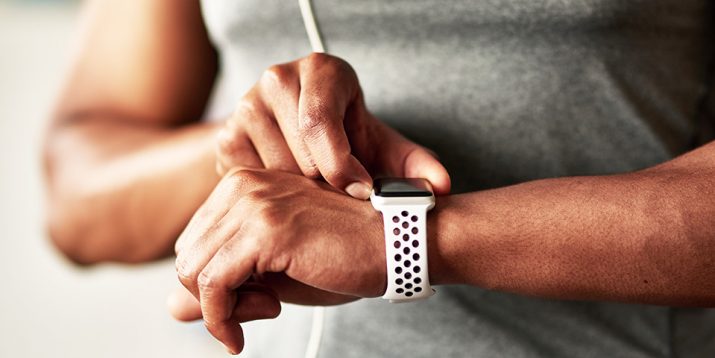How Long Does It Take to Walk a Mile?

To calculate how long it takes to walk a mile, you’ll need to factor age, skill level, and general health.
But if you want a back-of-the-napkin estimate, there is a ballpark range.
“A beginner can typically walk a mile in 15 to 20 minutes, or three to four miles an hour,” says Bethany Rutledge, a USA Triathlon-certified coach and author of Courage to Tri.
Of course, that leaves a lot of margin for the above factors, explored in greater detail below.
Mile: Average Walking Times by Age and Gender

According to a 2011 study that looked at average walking speeds across different age groups, men and women in their 30s and 40s tend to walk slightly faster than those in their 20s.
Walking speed then slows very slightly with each subsequent decade before slowing significantly starting in our 60s.
Pro tip: Get tips on how to convert meters to miles.
| AGE | GENDER | SPEED | TIME |
| 20–29 | Male | 3.04 mph | 19:45 |
| Female | 3.0 mph | 20:00 | |
| 30–39 | Male | 3.2 mph | 18:45 |
| Female | 3.0 mph | 20:00 | |
| 40–49 | Male | 3.2 mph | 18:45 |
| Female | 3.11 mph | 19:17 | |
| 50–59 | Male | 3.2 mph | 18:45 |
| Female | 2.93 mph | 20:29 | |
| 60–69 | Male | 3.0 mph | 20:00 |
| Female | 2.77 mph | 21:40 | |
| 70–79 | Male | 2.82 mph | 21:17 |
| Female | 2.53 mph | 23:43 | |
| 80–89 | Male | 2.17 mph | 27:39 |
| Female | 2.1 mph | 28:34 |
Source: PLOS
How Walking Speed Affects Mile Time

Is there a universal standard for a fast, moderate, or slow walking pace? Actually, yes.
Fitness experts tend to use these general guidelines.
Fast: 11 minutes per mile
Moderate: 15 minutes per mile
Easy: 20 minutes per mile
Going by that scale, this is about how long it takes to walk a mile plus some other common distances at a moderate pace:
| MILE | KILOMETER | 3K | 5K | 10K | 1/2 MARATHON | MARATHON |
| 15–20 mins | 10–12 mins | 30–37 mins | 1 hr | 2 hrs | 4–4.5 hrs | 6.5–8 hrs |
How Steps Per Minute Affect Mile Time
![]()
In 2018, The British Journal of Sports Medicine tracked the steps per minute of people walking at various speeds and arrived at the following ranges.
Slow: 60 to 79 steps per minute
Medium: 80 to 99 steps per minute
Brisk: 100 to 119 steps per minute
Vigorous: 130+ steps per minute
The researchers also defined 100 steps per minute as “moderate-intensity exercise.” But be aware that how many steps you take per minute will also depend on your height and stride length.
Using a fitness tracker — like Apple Watch or Fitbit — can help you gauge your progress and stay motivated.
Most of these wearable devices track distance covered, calories burned, and steps taken in a day — or over the course of a workout.
“As you improve your cardiovascular fitness and get in better shape, your time to complete a mile will fall,” says Rutledge. “In that case, you might want to consider adding on distance so your workout can remain in the 20-to-30-minute range.”
How Can I Train to Walk Longer Distances?
The key is to be consistent with your walking routine, and gradually add to it.
“As a beginner, it helps to focus on frequency initially,” says Rutledge. “Frequency is achieved by first gradually stringing a number of short and easy walks together over many weeks, then slowly adding time, and then finally adding in intensity where appropriate.”
For example: Try a 20-minute walk the first week. The next week, aim for 25 minutes, and the next week, go for 30. And when you’re ready, mix up the terrain to challenge yourself by finding places to going uphill or walking at an incline on a treadmill.
Can I Lose Weight by Walking a Mile a Day?

That depends on your physical activity level and diet.
“Combining exercise with diet creates a calorie deficit, which results in weight loss,” says Caleb Backe, a New Jersey-based certified personal trainer and health expert with Maple Holistics.
“This means that while a mile can be enough to result in weight loss, it’s not the only factor to take into consideration,” he explains.
The key to weight loss is to burn more calories than you consume.
According to the CDC, walking at a moderate pace (3.5 mph) will enable a 154-pound person to burn about 280 calories per hour while walking at a vigorous pace (4.5mph) will allow them to burn approximately 460 calories an hour.
That’s not bad — three hours a week, and you’ve burned close to 1,500 calories, right?
But that won’t translate to weight loss if you follow your first walk with a visit to Starbucks for a sugary frozen drink, and then hit the drive-thru a couple of times that week after work.
You have to watch what you’re putting in just as much as what you’re burning off.
Regardless of what you’re doing to lose weight, walking has been shown to offer a host of other benefits.
They include improved cardiovascular health and aerobic capacity, a lower risk of diabetes and stroke, improved mental health, stronger bones, and better balance.
And remember: Any amount of exercise is better than none.
“According to the recent government guidelines, even just 10 minutes of movement daily can optimize your health,” says Backe. “If you’re walking a brisk mile, it can take you as little as 15 minutes, which means that you’re already getting more than minimum movement for optimal health.”
